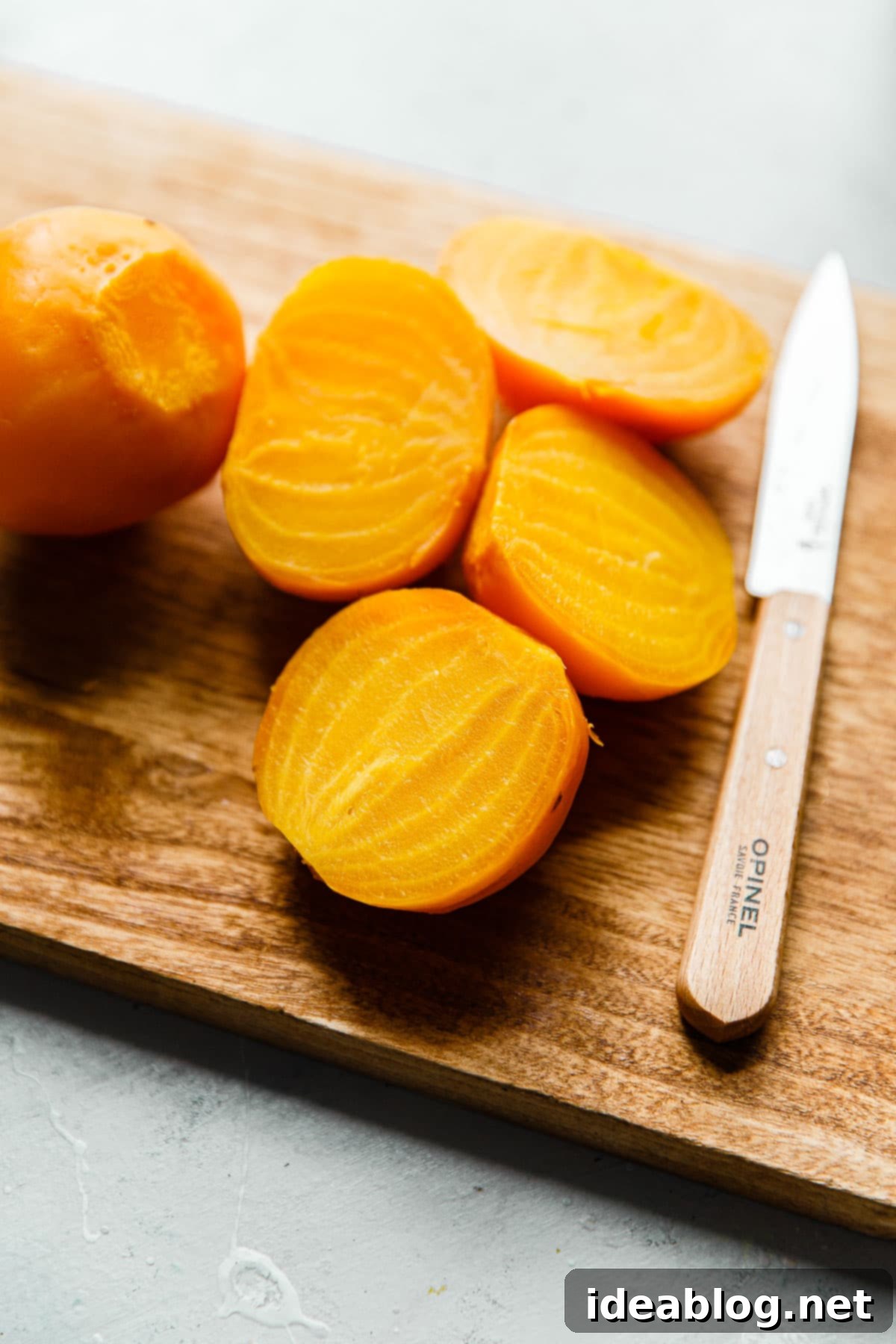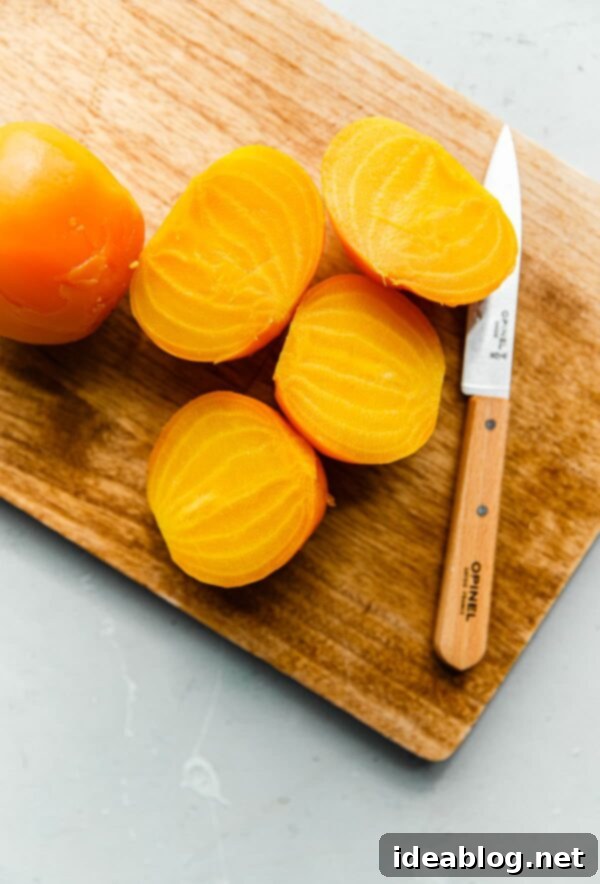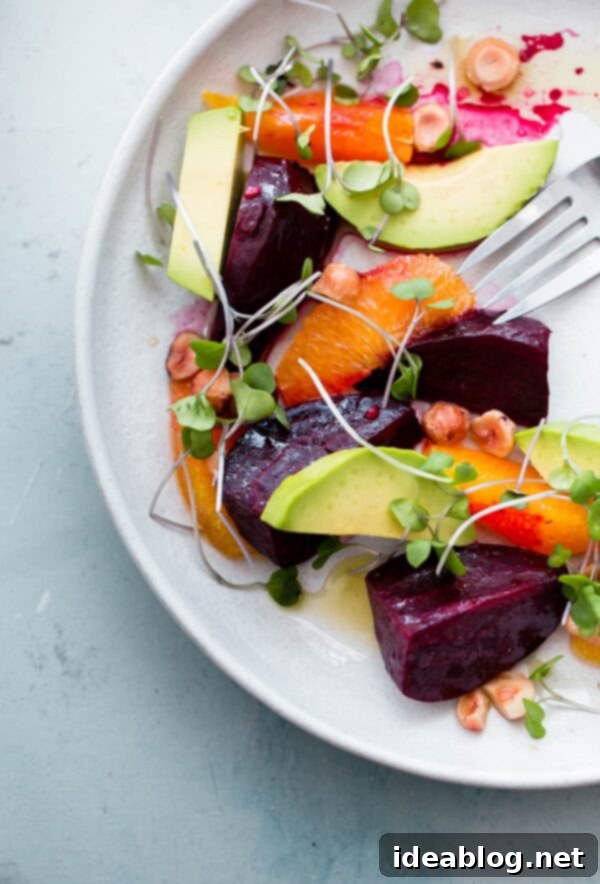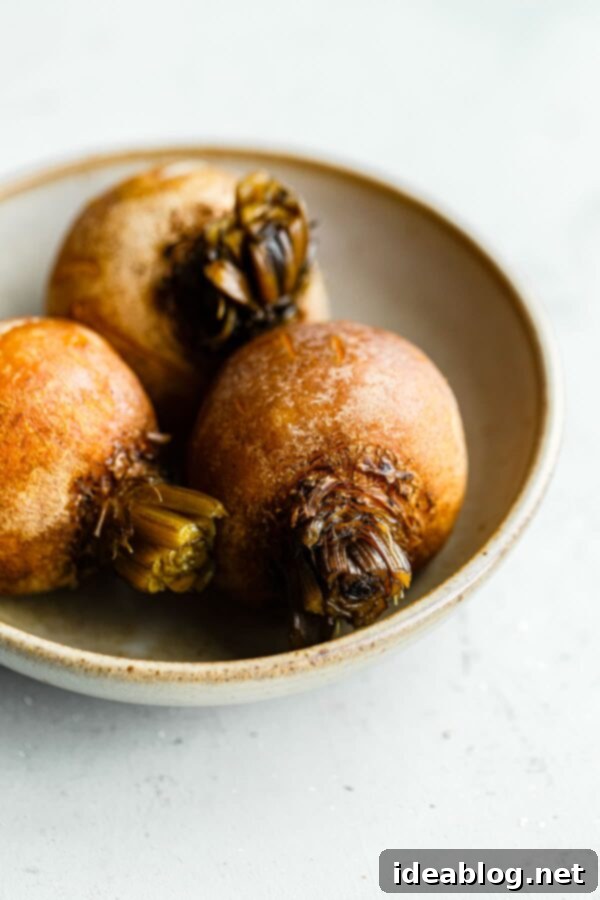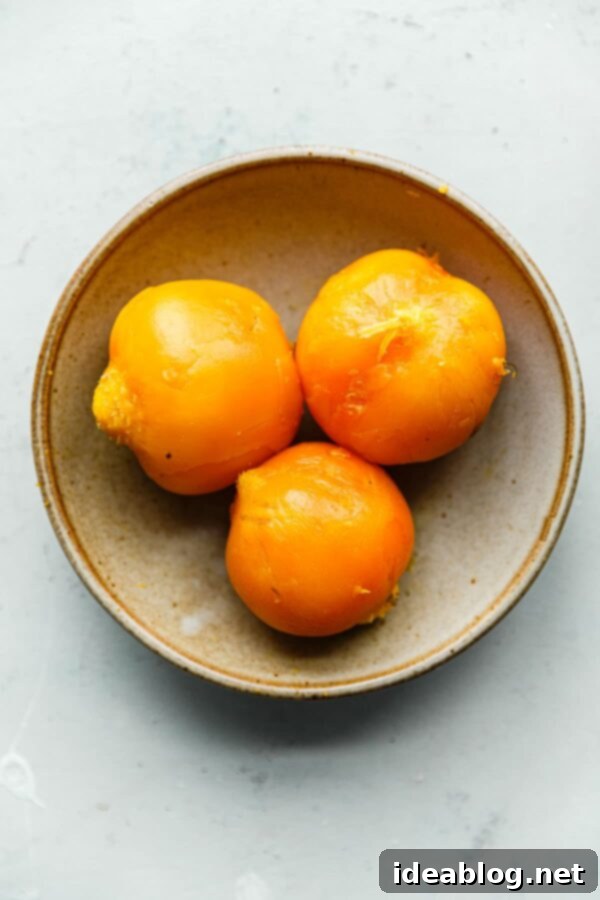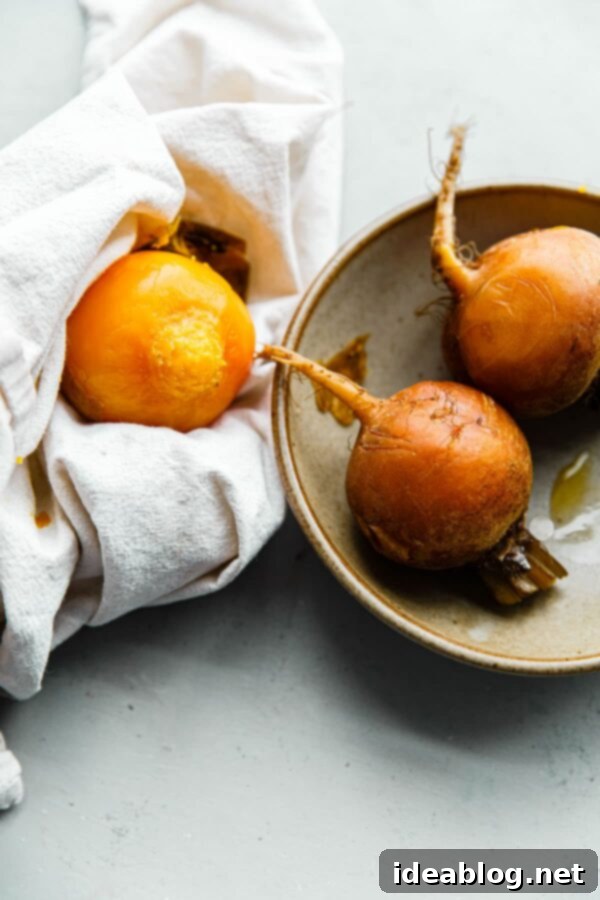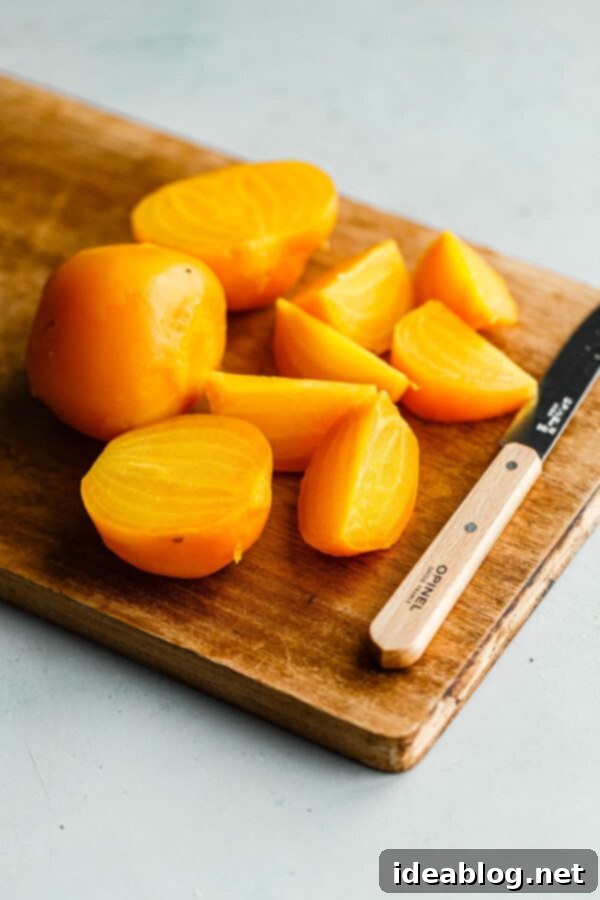How to Cook Beets: A Simple Guide to Perfectly Tender and Flavorful Beetroot
Welcome to this straightforward cooking tutorial, designed to help you prepare perfect beets from the comfort of your home. In uncertain times, focusing on simple, nourishing meals can bring a sense of stability and accomplishment. My aim is to provide practical resources and comforting recipes, emphasizing ingredients that are often readily available and have a good shelf life.
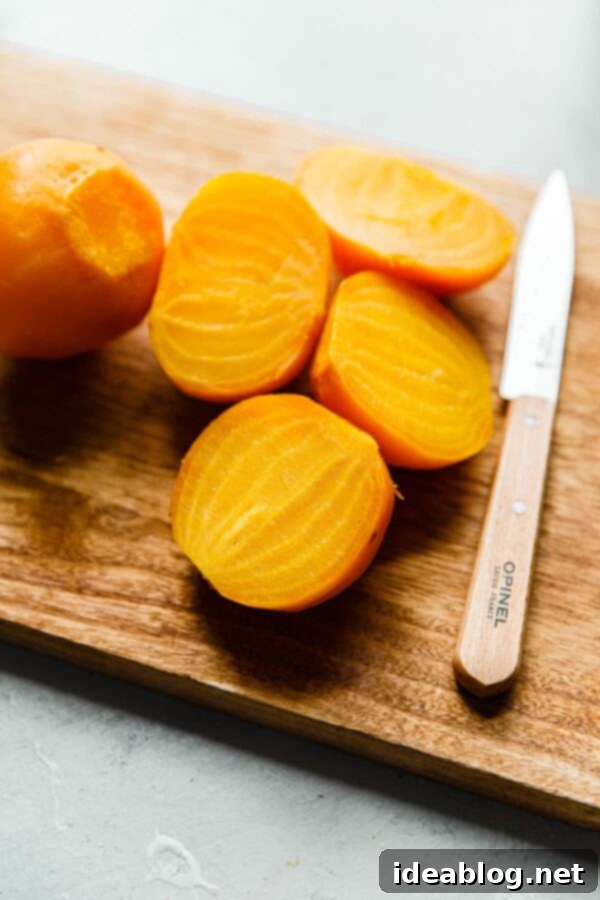
Many of us are adapting to new routines, managing limited grocery runs, and seeking ways to make the most of our ingredients. During this challenging period, I hope to offer valuable content and perhaps a welcome culinary diversion. This guide focuses on a foundational skill: cooking fresh beets. In the coming weeks, anticipate more tips on storing produce, minimizing food waste, and transforming simple ingredients into delicious meals.
Why Cook Beets? Nutritional Benefits and Versatility
Beets are an incredibly nutritious root vegetable, packed with essential vitamins, minerals, and powerful antioxidants. They are an excellent source of fiber, folate (vitamin B9), manganese, potassium, iron, and vitamin C. Incorporating beets into your diet can support heart health, boost athletic performance, and help reduce inflammation. Beyond their health benefits, beets are wonderfully versatile, lending themselves to a vast array of dishes, from savory salads to sweet desserts.
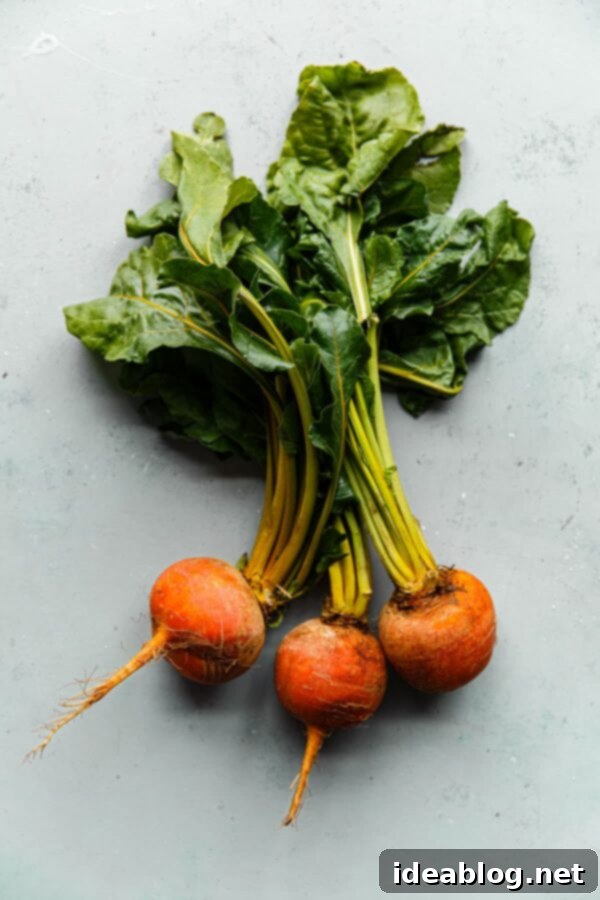
One of the great advantages of beets, like many root vegetables, is their impressive storage life. While finding frozen vegetables might sometimes be a challenge, fresh produce, including beets, is regularly restocked. If stored properly, trimmed beets can last in your refrigerator for 2 to 4 weeks, making them an excellent ingredient to keep on hand.
Exploring Beet Varieties and Creative Uses
When you think of beets, vibrant red might be the first color that comes to mind. Red beets are indeed the most common and widely available, boasting a rich, earthy flavor and a stunning hue that can naturally color any dish. However, don’t overlook other fantastic varieties! Golden (yellow) beets offer a milder, sweeter, and more delicate flavor profile. A significant bonus of golden beets is that they don’t stain your hands or cutting boards like their red counterparts, making cleanup much easier.
Beyond red and golden, you might also find striped Chioggia beets, which reveal beautiful concentric rings of red and white when sliced, perfect for adding visual appeal to salads. While each variety has its unique charm, the cooking method we’ll cover is suitable for all types of fresh beets.
Utilizing Beets in Your Culinary Creations:
Once cooked, beets can be incorporated into countless recipes. Here are some inspiring ideas:
- Salads: From a simple beet and goat cheese salad to a more elaborate beet and orange salad with avocado, cooked beets add sweetness, color, and texture.
- Grain Bowls: Toss them into quinoa, farro, or rice bowls for a hearty and nutritious meal.
- Juices and Smoothies: Add raw or cooked beets to your homemade pressed juice or morning smoothie for a vibrant color boost and an extra dose of nutrients and fiber.
- Vegetarian Fillings: Cooked beets can be diced and seasoned for delicious vegetarian taco fillings, wraps, or even as a base for veggie burgers.
- Soups and Stews: Incorporate them into hearty borscht, vegetable stews, or even a creamy beet soup.
- Dips: Blend cooked beets into hummus or other dips for a colorful and flavorful twist.
- Sweet Treats: Don’t limit beets to savory dishes! They add moisture and a subtle sweetness to baked goods like this chocolate beet bundt cake, muffins, or even brownies.
- Pickled Beets: A classic way to preserve beets, pickled beets make a fantastic condiment or side dish.
Don’t Forget the Greens!
If you’re fortunate enough to find beets with their vibrant greens still attached, don’t discard them! Beet greens are edible, delicious, and incredibly nutritious. They have a delicate flavor, similar to spinach or Swiss chard, and can be used in almost any recipe that calls for those leafy greens. Simply sauté them with a little garlic and olive oil – here’s a simple recipe for sautéed beet greens. Using the greens is a fantastic way to practice zero-waste cooking and maximize the nutritional value from your produce.
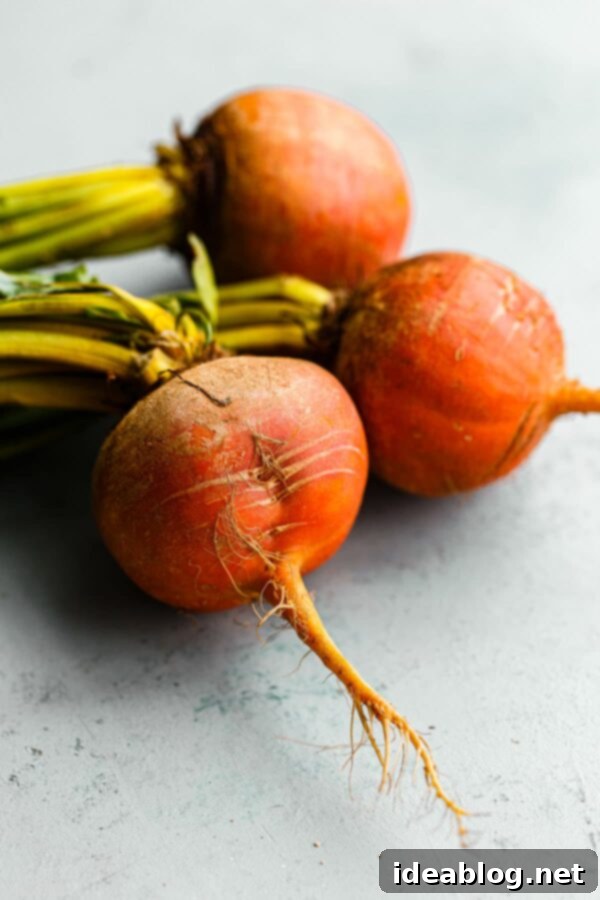
The Best Way to Cook Fresh Beets: A Simple & Hands-Off Method
While cooking fresh beets from scratch does require some time, the process is almost entirely hands-off. Most normal-sized beets will take anywhere from 45 minutes to 1.5 hours to cook through, depending on their size. There are various methods for cooking beets, including boiling, steaming, and roasting. Many roasting methods suggest wrapping each beet tightly in aluminum foil, but I prefer a simpler, more efficient approach: roasting them in an oven-safe pot with a lid.
This method, which is similar to braising, yields consistently tender and flavorful beets without the need for individual foil packets. It creates a steamy environment that gently cooks the beets, preserving their natural sweetness and nutrients. All you need is a sturdy, oven-safe pot with a tightly fitting lid, making it a more straightforward and less wasteful option.
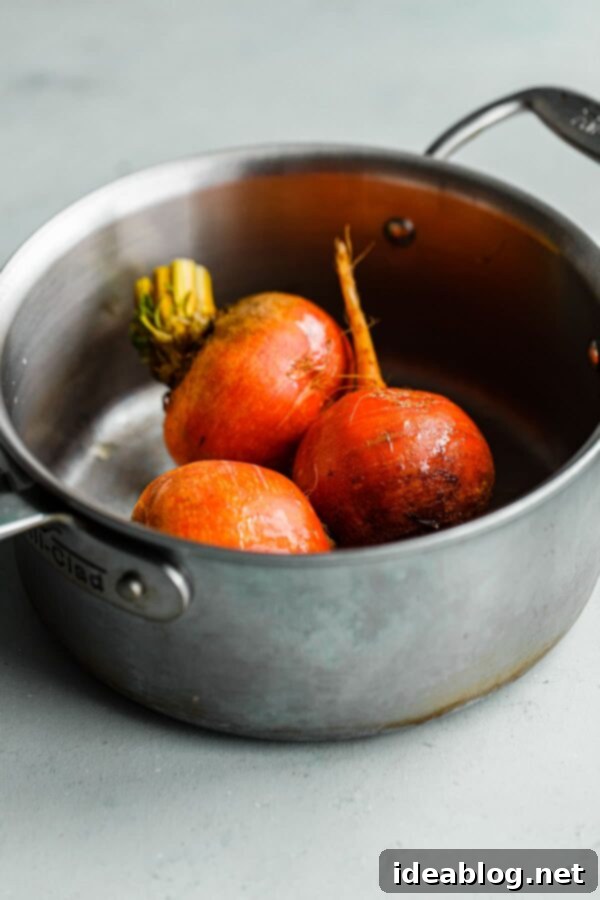
Step-by-Step Guide: How to Cook Beets Perfectly
Follow these simple steps to achieve perfectly tender and delicious beets every time:
- Preheat Oven: Preheat your oven to 375°F (190°C) with an oven rack positioned in the center.
- Prepare Beets: If the greens are attached, trim them off, leaving approximately ½ inch of the stem ends. You can save the greens for another use (like sautéing!). Do not remove or trim the hairy root end at this stage. Gently scrub the beets under running water to clean them, being careful not to pierce the skin. Keeping the skin intact during cooking helps to retain their color and nutrients.
- Oil and Cook: Lightly rub the cleaned beets with a small amount of olive oil or avocado oil. Place them in a large, oven-safe saucepan or Dutch oven. Fill the pot with cold water until the beets are submerged halfway. Cover the pot with a tightly fitting lid.
- Roast until Tender: Transfer the covered pot to the preheated oven and cook for a minimum of 45 minutes, or up to 1.5 hours. The total cook time will depend significantly on the size of your beets. To check for doneness, carefully remove the pot from the oven (using oven mitts) and pierce the center of a beet with a small paring knife. If the knife slides in with little to no resistance, the beets are perfectly cooked. If you feel resistance, return them to the oven and continue cooking for another 15-20 minutes before checking again.
- Cool for Easy Peeling: Once cooked, remove the beets from the oven and transfer them to a bowl. Allow them to cool until they are comfortable enough to handle. Warm beets are much easier to peel than cold ones.
- Peel and Slice: Once cooled, use a clean kitchen cloth or gloves to gently rub the skins off the beets. The skins should slip off quite easily. Trim and discard the tougher tail and stem ends. Cut the peeled beets into wedges, half-moon shapes, or dice them, depending on your desired use.
How to Store and Freeze Cooked Beets: Maximizing Shelf Life
Once you’ve cooked a batch of delicious beets, you’ll want to ensure they last. Proper storage is key to enjoying them for days or even months:
- Refrigeration: Cooked beets can be stored in an airtight container in the refrigerator for at least 3 to 5 days. This makes them perfect for meal prepping and quick additions to future meals throughout the week.
- Freezing Cooked Beets: To extend their life even further, you can easily freeze cooked beets. Cut the cooked beets into wedges, cubes, or slices. Spread them out in a single layer on a small sheet pan or plate, ensuring they are not touching each other. This prevents them from clumping together during freezing. Freeze until solid, then transfer the frozen beet pieces to a large Ziplock bag or a freezer-safe container.
- Using Frozen Beets: Frozen beets are incredibly convenient. You can add them directly to smoothies for an extra dose of nutrition and fiber, or defrost them in the refrigerator overnight to use in salads, grain bowls, or other dishes. They will retain most of their texture and flavor after thawing, making them a fantastic freezer staple.

How to Cook Beets
Pin
Review
SaveSaved!
Equipment
-
Oven-safe Pot with Lid (e.g., All-Clad d5 3-Quart Stainless-Steel Saucepan)
Ingredients
- 1 large bunch fresh red or golden beets with greens attached
- extra virgin olive oil or avocado oil
- Cold water
Instructions
-
Preheat oven to 375°F (190°C) with a rack in the center position.
-
Trim beet greens (set aside for another use, like sautéing), leaving roughly half an inch of stem on the top of the beet roots. Do not remove or trim the hairy roots at this stage. Scrub gently with your fingertips to clean the beets without piercing the skin.
-
Rub the beets with a small amount of olive or avocado oil. Place them in a large, oven-safe saucepan or Dutch oven and fill with cold water until the beets are submerged halfway. Cover the pot with a tightly fitted lid.
-
Transfer the covered pot to the preheated oven and cook for 45 minutes (minimum) or up to 1½ hours (for 2½-inch to 3-inch diameter beets), or longer for larger beets. Check for doneness by piercing the center of each beet with a paring knife – if the knife meets no resistance, the beets are finished cooking. Total cook time will vary based on size.
-
Remove the pot from the oven. Carefully transfer the hot beets to a bowl and allow them to cool until they are able to be handled comfortably. Warm beets are significantly easier to peel than cold ones.
-
Using a clean kitchen cloth or food-safe gloves, gently rub the skins off the beets. The skins should slip off easily. Trim and discard the tougher tail and any remaining stem. Cut the beets into wedges, half-moon shapes, or cubes, and use as desired in your recipes.
-
Storage Tips: Cooked beets will last at least 3 to 5 full days when stored in an airtight container in the refrigerator. You can also freeze cooked beets for up to 3 months or longer to extend their life. To freeze, spread the cooked beet pieces (ensure they are not touching one another) on a small sheet pan or plate and place in the freezer until completely solid. Then, transfer them to a large Ziplock bag or a freezer-safe container. Frozen beets can be added directly to smoothies (for an extra dose of nutrition and fiber!) or defrosted and thawed in the fridge before regular use in other dishes.
Tips for Success:
- Don’t Waste the Greens: If the beet greens are fresh and vibrant, absolutely make sautéed beet greens! They are delicious and nutrient-dense.
- Choose Your Beets: While red beets are delicious and highly nutritious, I personally love yellow beets because they have a slightly more delicate flavor and you don’t have to worry about staining your hands or cutting boards. Red beets are generally more readily available.
- Storage and Freezing: Cooked beets are versatile. They can be stored in the refrigerator for at least 3 to 5 days. For longer storage, freeze them for up to 3 months or more. Frozen beet pieces are great for smoothies or can be thawed in the refrigerator for other culinary applications.
